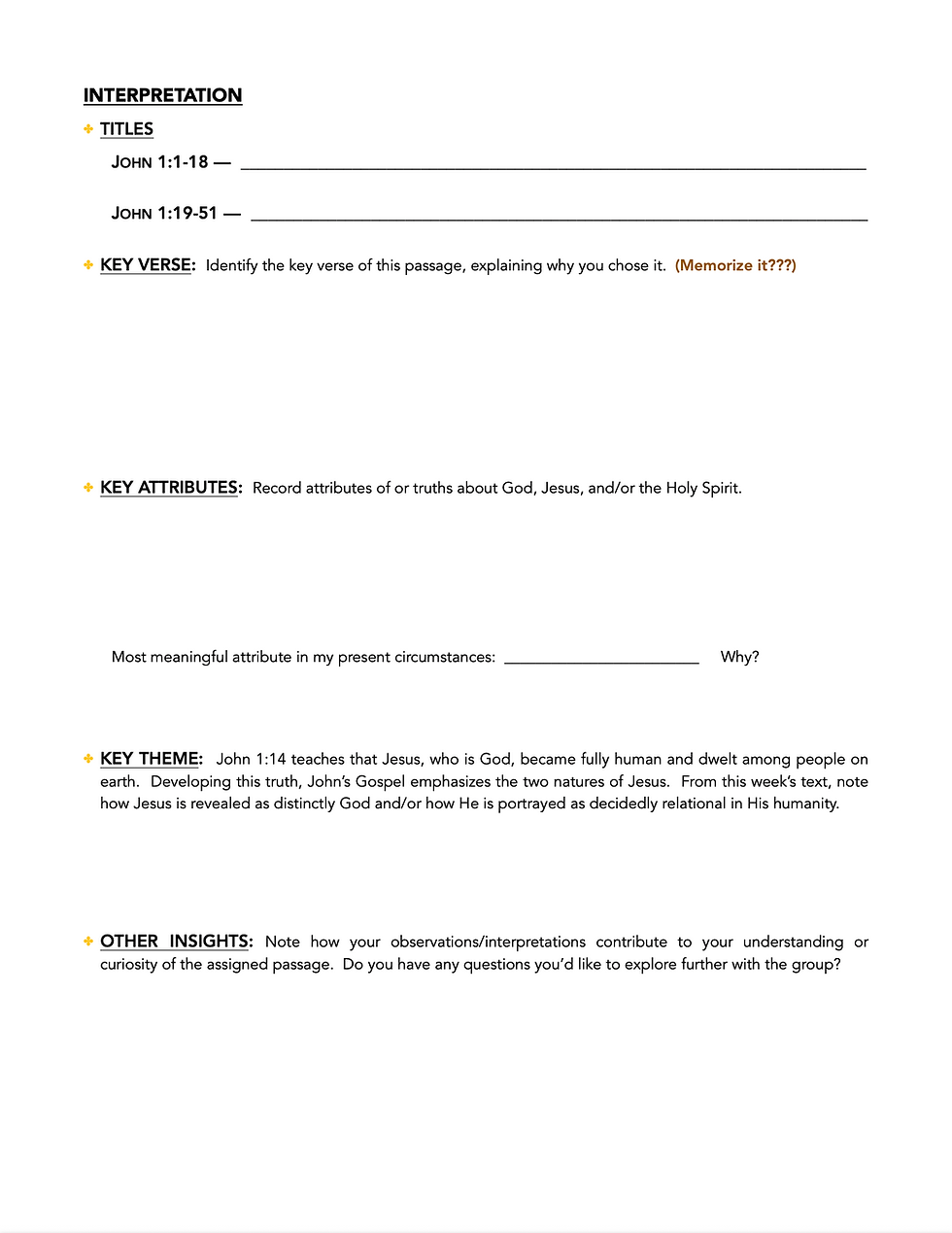The Inductive Bible Study Method: Step Two — Bible Interpretation
- BC Publications

- Aug 3
- 4 min read

Once you have completed your observation of a given text, it is time for Bible interpretation. The interpretation step is vital for grasping the Truth of a passage and involves analyzing the text to discern its intended meaning. One of the more dangerous errors in Bible interpretation is divorcing the author from his setting and original audience. What the prophet or apostle was trying to say is the only accurate meaning. Many disagreements about Scripture have their origin in reader-centric, reader-imposed interpretations. The Inductive Bible Study Method seeks to prevent such error.
KEY COMPONENTS OF BIBLE INTERPRETATION
CONTEXT | Understand the historical, cultural, and literary background of the passage. |
AUTHOR INTENT | Discern what the author sought to communicate to his original audience. |
CROSS-REFERENCING | Scripture interprets itself. Identify related verses/passages elsewhere in the Bible. |
KEY WORDS & PHRASES | Study significant words/phrases. |
OVERVIEW: STEPS FOR EFFECTIVE BIBLE INTERPRETATION
Pray! Ask the Author for His wisdom and Divine insights. Accurate Bible interpretation begins with God.
Read, read, read the passage... and then read it again, familiarizing yourself with the text and its nuances. (This may already be accomplished in the Observation step.)
Ask Questions
Who is the author?
Who are the original recipients?
What is the author's main point?
For what reason or occasion was it written?
What type of literature is this passage (historical, poetry, wisdom, epistle)?
Consult introductory resources and Bible dictionaries/encyclopedias to learn about the book's historical and cultural background.
Paraphrase the Passage. Putting the main ideas in your own words helps move facts from the brain to thoughts for the heart.
Form your initial perspective apart from commentaries, allowing the Holy Spirit to teach you as He has promised.
Begin looking for connections from what was written to an ancient audience of a different culture and language to your own life today.
INTERPRETATION: The Bible Conversations Series' Approach (Part 1)

INTERPRETATION: Division Titles
The Bible Conversations Study & Discussion Guides break each week's passage into two divisions. Each division focuses on one biblical principle from which personal applications are drawn. These divisions are introduced on this Interpretation page. Having already summarized your findings from the Observation Chart in step one, we now move into interpretation by giving titles to each part of our passage. These titles often reflect the meaning, main lesson, or theme of this portion of the text, hallmarks of Bible interpretation. While not necessary, creativity is encouraged as we move from just the facts to exploring the passage's implications. Some people borrow from their Bible's headings, others mimic newspaper headlines, and a few poetically-inclined folks have opted for rhyming couplets.
INTERPRETATION: Key Verse
When it comes to determining a passage's Key Verse, there are different schools of thought. Some people select the verse that best represents the overall meaning or theme of a passage. On the other hand, some people use this part of the worksheet to record the verse that impacts them more personally. Either approach is acceptable, and both types of people are encouraged to commit their key verse to memory.
INTERPRETATION: Key Attributes
All Scripture has been written to reveal God. Whether His attributes are stated explicitly, such as those showcased in Exodus 34:6-7, or the reader can infer what the Lord is revealing about Himself based on His actions, every page in the Bible has something to teach us about God. Notice everything you can about God and note it in this section of the Interpretation worksheet. From your finalized list, pick your favorite attribute of God at that moment, noting why you have chosen it. This exercise in Bible interpretation begins bridging our mind with our hearts. The Bible is more than objective facts; it is also truth that impacts every part of our being.
INTERPRETATION: Key Theme
This portion of the Bible Interpretation worksheet will be specific to each study & discussion guide. For example, in this sample from the Gospel of John (Part 1), the theme traced each week is the dual natures of Jesus (i.e., both God and man). The aim of tracing the Key Theme throughout a complete study is to stay aware of the cohesiveness of the author's message. Remember, we never want to lose sight of the author's intended meaning.
INTERPRETATION: Other Insights
Invariably, people invested in personal Bible study are going open up new areas of exploration (often called "bunny trails"). Sometimes, personal study also leads to unanswered questions perfect for group discussion. When using the Bible Conversations Study & Discussion Guides with a small group, this section of the Interpretation worksheet is the ideal spot for recording these "loose threads." We can learn much from one another. That's one of the beauties of the body of Christ!

CONCLUDING THOUGHTS
Concerning itself with Step Two of the Inductive Bible Study Method, this article highlighted context and the author's intent as crucial for avoiding common errors in Bible interpretation. Gaining this additional knowledge requires diligent study, but the investment reaps priceless, eternal benefit. The blessings of coming to an accurate understanding of the Bible's meaning are without measure.
COMING SOON...
INTERPRETATION: Part 2 — Word Studies and Cross-References
But wait... there's more to Bible interpretation! Our next article will share (and demystify) the Bible Conversations Series' approach to this surprisingly fun segment of the Inductive Study Method.




Comments